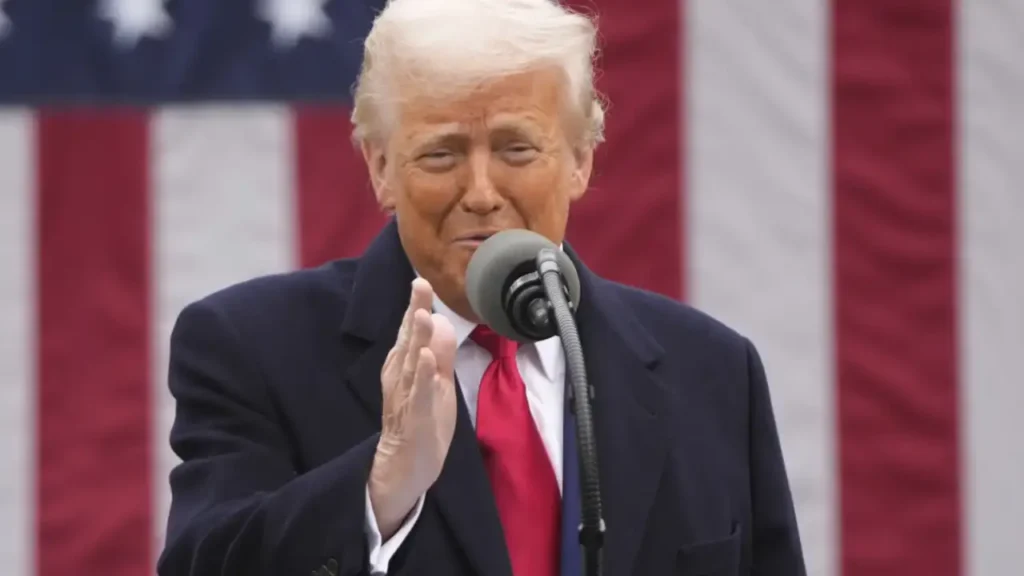By Dr. Nilanjan Banik
Renowned Nobel laureate economist Robert Solow was once asked if having a trade deficit is bad for any economy. He answered by saying he would always have a trade deficit with his barber and would always run a trade surplus with his students. Such is the nature of the game in the realm of economic transactions. Some countries are always better at producing certain goods and services, which they export, and they gain by importing those they are not as good at producing. Arguing that the US should impose equal reciprocal tariffs is fundamentally flawed. It contradicts the principle of comparative advantage – the very foundation of international trade since the beginning of modern civilization.
If the US were to implement reciprocity in tariffs, it risked a short-term recession and, potentially, a trajectory resembling that of Argentina – a once economic miracle at the beginning of the 20th century that that ultimately declined as a result of protectionist measures. Beginning in the 1930s, Argentina imposed restrictions on labor immigration and sharply increased tariffs, resulting in long-term consequences that have contributed to its current status as a struggling and underperforming economy.
If history and economic policies are any indication, then Trump had to back down. It is not surprising that on May 12, 2025, the US and China agreed to a significant 90-day suspension of tariffs, with both nations committing to reduce duties on each other’s goods. The US tariffs on Chinese imports will decrease from 145% to 30%, while China’s tariffs on US products will drop from 125% to 10%. China on their part has also agreed to remove all trade restrictions, including the ones they imposed on rare earth materials, so important for the US electronic, defense, and green energy sectors. If China, according to the US, is successfully addresses the fentanyl crisis by strengthening domestic regulations on synthetic opioids, then this existing 30% tariff will be reduced further to 10% at the end of the 90-day period. Fentanyl, a powerful and often lethal drug, has fueled a public health crisis in the US, contributing to tens of thousands of overdose deaths annually.
Trump, being an astute businessman, always believed in the principle of testing the waters first, negotiating aggressively, and ultimately settling somewhere in between. But in this case, China seems to have the upper hand. China was always defiant, as it had little to lose. A post by a Chinese social media influencer saying, ‘Our ancestors didn’t cave in – why should we give up what we have?’ is gaining millions of views. Last March, a Chinese spokesperson publicly stated, ‘If war is what the U.S. wants, be it a tariff war, a trade war, or any other kind, we are ready to fight until the end’.
The US tariffs were never been effective containing the Chinese imports. The average annual trade deficit between the US and China went up from $311 billion during the tenure of Barack Obama (2009–2016) to $361 billion under Trump 1.0 (2017–2020), despite his aggressive stance toward China.
There are ways to evade tariffs. Since tariffs target a country’s exports, the simplest workaround is to shift the production base and export from a third country – something the Chinese have mastered. The loss in exports from China to the US is increasingly being offset by exports from countries in Southeast Asia, with US imports from the region rising by 14 percentage points between 2018 and 2023. Vietnam, Malaysia, and Thailand have emerged as primary beneficiaries. Vietnam’s exports to the US surged by 40% between 2018 and 2023, reflecting the broader trend of Chinese manufacturers shifting final assembly to third-party countries in order to bypass tariffs.
Similarly, to benefit from the US-Mexico-Canada trade alliance, Chinese firms are relocating their production base closer to the US. Take for instance, Mexico. In April 2024, the US Trade Representative Katherine Tai accused China of disguising its steel products as Mexican steel to enter the US market. In 2023, US imports of Mexican goods totalled $475 billion, approximately, $20 billion more than in 2022. During the same time the US imports of Chinese goods amounted to $427 billion, around $10 billion less. An estimated $3.7 billion of Chinese FDI came to Mexico in 2023, significantly higher with an average flow of $1.3 billion during the past decade. At least 30 Chinese firms now operate out of Mexico including Chinese automobile giants such as BYD and Cherry International. The flow of Chinese FDI to Mexico has also increased by 30% during the last two years.
On the contrary, trade interdependence between the US and China has decreased during the past decade. Between 2018 and 2024, China’s share of trade with the US has fallen from 15.7% to 10.9%. Since China has already diversified its export routes by channelling products to the US through third countries, US non-tariff measures have also become less effective. The Global Trade Alert database, reveals US has initiated more than 4525 protectionist measures against Chinese exports. However, the US trade deficit with China continued to rise.
China has enhanced the competitiveness of its manufacturing exports by continuing to shift production to locations with lower input costs. Much of the Chinese investment in the Greater Mekong Sub-region is driven by lower land and labor costs in countries such as Cambodia, Lao PDR, and Vietnam. China has invested around $1 trillion to countries in Africa, Latin America and Asia. This has helped reduce China’s energy requirements, allowing Beijing to secure cheaper foreign energy sources (oil and power) and minerals. Chinese companies have built six hydropower plants and one thermal power station in Myanmar and invested in power transmission and copper processing units in Vietnam. In countries like Sri Lanka (Hambantota port), Pakistan (Gwadar port), and throughout the Middle East, Africa, and Southeast Asia, Chinese investments are being used to develop port infrastructure, so that the cost of shipping Chinese products falls.
The concept of reciprocal tariffs will never succeed, as it assumes that a tariff on China will not impact US imports from any other third-country. Retaliation by trading partners can also impact US exports, and value of dollars which can again impact trade balance. Real world does not operate with ceteris paribus (holding other factors constant) assumption, and sooner Trump understands this the better it is for the US economy. (IPA Service)
(The author is Professor, School of Management, Mahindra University).

 Global Diplomatic Campaign to Spotlight Pak Role in Pahalgam
Global Diplomatic Campaign to Spotlight Pak Role in Pahalgam 